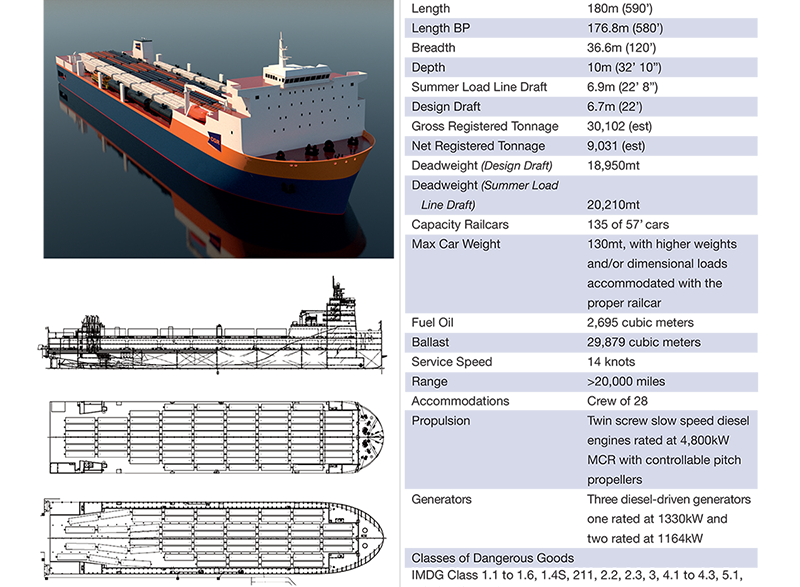CG Railway (CGR) today announced the launch of the first of two new rail ferries. Part of a joint venture between subsidiaries of Genesee & Wyoming Inc. (G&W) and SEACOR Holdings Inc, CGR operates a U.S. Class III freight railroad transporting approximately 10,000 annual carloads of diversified commodities across the Gulf of Mexico.
The newly launched vessel is expected to begin operations in the second quarter of 2021, with the second new vessel expected in the third quarter. They will replace CGR’s two existing vessels, which have transported over 200,000 railcars in more than 1,400 sailings between Mobile, Alabama, and Coatzacoalcos, Mexico, since 2001. The trip across the Gulf currently takes approximately five days, or half the time required for the overland route. The new, 590-foot-long ferries are designed to carry 135 railcars each, up from 115 railcars on the existing ferries, with an expected top speed of 14 knots, up from seven knots. With their additional capacity, and faster speed enabling more sailings per month, the new vessels increase CGR’s potential annual carload capacity by 40 percent.

After launch from CSSC Huangpu Wenchong Shipbuilding Company in China, the vessels will be thoroughly tested, including undergoing sea trials to ensure all systems are operating as designed, before departing for the United States. The new ships are likely the first built with features designed to cope with a pandemic, including segregated passageways for local pilots and other visitors, as well as spaces with separate HVAC systems to quarantine crew. “We’re trying to anticipate all the potential scenarios we could have in the next 20 to 30 years,” Lijeron explains. “If there is anything we’ve learned from the past year, it’s the value of protecting our customers’ supply chains from potential disruptions.
“CGR offers tremendous potential for customers – connecting five Class I railroads and a G&W short line in Mobile to Ferromex in Coatzacoalcos – and I’m excited to lead its growth as a much faster alternative to the traditional land route,” Lijeron continues. “Our investment in constructing these two state-of-the-art vessels is a clear indication of our commitment to becoming the premium freight transportation provider between the United States, Canada and central and southern Mexico.”





